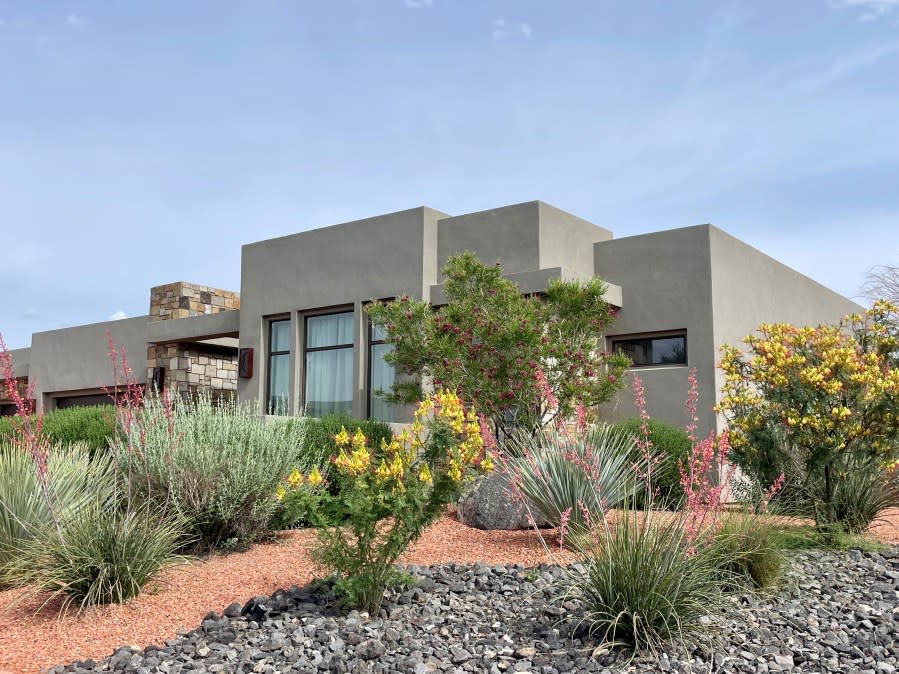Program offers Utahns cash to replace ‘lazy lawns’ with drought-resistant plants
SALT LAKE CITY (ABC4) — Now in its second year, a statewide program is giving Utah homeowners cash for replacing their “lazy lawns” with landscaping and drought-resistant plants.
Doug Bennett, conservation manager for the Washington County Conservancy District, defines these lazy lawns as areas of turf grass that people don’t generally step on other than to mow.
“These are lawns that aren’t really doing anything — not supporting our children’s soccer games or providing spaces for us to recreate,” he said.
‘Sober curious:’ Can dry bars and mocktail menus thrive to deliver a hangover-free night out?
In Washington County alone, about 1,000 lawn conversion projects have been completed in the last 14 months, the equivalent of replacing 22 football fields of grass. The annual savings are estimated to be more than 50 million gallons of water.
“This is one of the most cost-effective ways for us to develop and stretch our water,” said Bennett, noting that other water-saving projects require expensive infrastructure or rights agreements.
How the program works
The particulars of the program vary depending on where one lives. In general, however, the process starts at UtahWaterSavers.com. First, people need to create an account, and after that, they can submit an application.
Next, officials will document the square footage of the lawn to be torn out and make sure that the project will meet standards. Projects can range from a complete lawn rework to replacing a strip of turf along a sidewalk, as long as it’s more than 200 square feet.
“What we’re looking for is not to just replace your grass with a bunch of concrete or gravel,” said Kelly Good, with the Jordan Valley Water Conservancy District. “We still want to see plants.”


Generally, the landscaped area will need to have 50% plant coverage, with shrubs, trees and cactuses able to thrive in Utah’s arid climate. The irrigation system must be drip, not overhead sprinklers.
If the standards are met, then the turf-tearing can begin. Homeowners get a check in the mail once the project’s done.
These steps must be done in order. If someone has already ripped up their grass, they can’t apply for the rebate.
How much is the rebate?
The program’s rebate varies, depending on location, from $1 to $3 per square foot of lawn removed. That might not sound like a lot, but it adds up.
“It will cover quite a bit,” Good said. “If you are a DIYer, that $3 a square foot can get you pretty far … it might even cover the whole project.”
Many people who participate in the program opt to use contractors, which is a significant cost. Still, Bennett said that in Washington County the rebate covers about 40% of the entire project, including labor.

Bennett added that the $2.2 million his district has paid in rebates so far has spurred $5 million in local economic activity.
“So, literally, saving water is creating jobs in Washington County,” he said.
Local water conservancy districts pay the costs of the rebates with matching funds from the state government. Last year, Utah lawmakers passed a bill that set aside $3 million annually for the landscaping program.
Drought-resistant plants
Those unsure what water-saving plants they can get to replace their lawns can find inspiration at conservation gardens across the state.
Near Salt Lake City, there’s Conservation Garden Park. In St. George, there’s Red Hills Desert Garden. These gardens are filled with creative landscaping features and native plants that can tolerate Utah’s high desert climate.
For Bennett, his favorite drought-resistant plant is the Texas mountain laurel, an evergreen flowering shrub.
“It has a pendulous, cluster-of-grapes flowers on it,” he said. “It smells like a grape popsicle.”
For the latest news, weather, sports, and streaming video, head to ABC4 Utah.

